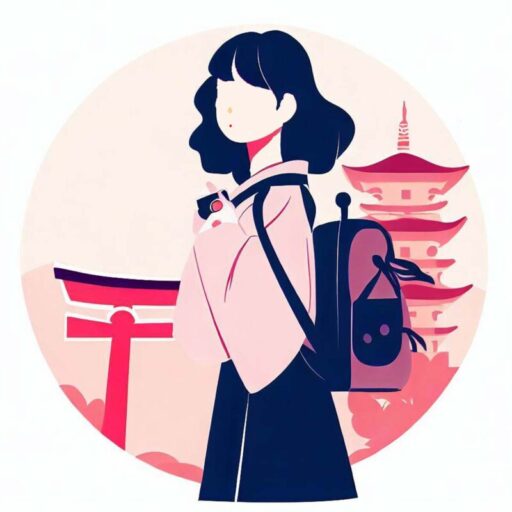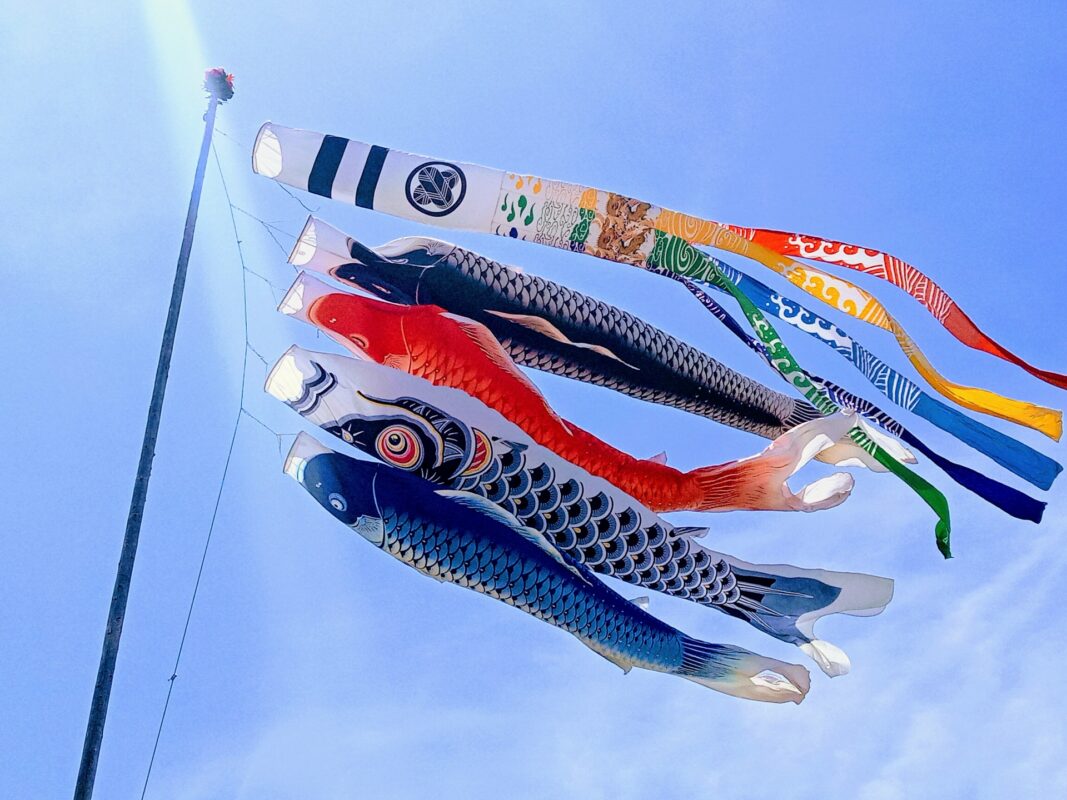All about Boy’s Festival: How it’s celebrated by region from history to the present

『 This article is… 』
It provides a detailed explanation of the history of Boy’s Festival and the characteristics of each region. This content is perfect for those who love traveling and those who are interested in traditional Japanese culture. While learning how to celebrate Boy’s Festival from all over the country, you will be able to deepen your understanding of Japan’s deep culture and history, and it will be an opportunity to rediscover the charm of the region.
Hello, I’m Kasumi, a travel web writer. Japan’s culture and history are extremely deep, and learning about each aspect of it will add rich color to our lives. Today, I will focus on the traditional Japanese event “Boys’ Festival,” and introduce its history, origins, regional characteristics, and current ways of celebrating in detail, including my travel experiences. I think so.
Tango no Sekku is known as a day to celebrate the growth of children and pray for their health, but it has various characteristics depending on its origin, history, and region. My experience of traveling through Japan’s 47 prefectures has shown me the diversity and richness of this holiday. Now, let’s explore the charm of Boy’s Festival together.
History and origin of Boy’s Festival
What is Tango no Sekku?
Boy’s Festival is a traditional Japanese event held on May 5th every year, and is primarily a day to wish for the healthy growth and happiness of boys. This holiday is one of the “Gosekku” and has been rooted in Japanese culture since ancient times.
History of Boy’s Festival
The origins of Boy’s Festival date back to ancient Chinese customs. In ancient China, May 5th was considered a day of strong evil spirits, and there was a custom of wearing fragrant herbs and burning scents to ward off misfortune. This custom was introduced to Japan and developed as a unique Japanese culture over time.
During the Nara period, this day came to be celebrated as Kawabata no Sekku,'' a day of playing on the riverside, and during the Heian period, it became popular among aristocrats. During this period, Boy's Festival came to be calledIris Festival,” and the custom of attaching decorations made of iris leaves to homes became widespread.
Origin of Boy’s Festival
The word Tango'' itself is said to be a combination ofthe beginning of the seasons” and Uma no Hi.'' This is said to come from the fact that May 5th of the lunar calendar marks the beginning of the Rikka season and is also the day of the afternoon. In addition, sinceHorse” symbolizes “Sun” in the Five Elements philosophy, it is said to symbolize masculinity and bravery, and is said to have been chosen as an event to celebrate the growth of boys.
Boy’s Festival from my experience
During my travels, I realized that the way Boys’ Festival is celebrated throughout Japan has its own regional characteristics. The Boy’s Festival is deeply rooted in Japanese life, with houses filled with the scent of irises, events held by the river, and traditional decorations and dishes from each region.
Boy’s Festival is not just a day to enjoy seasonal events, but also an important day to deepen family bonds and pray for the healthy growth of children. Through this day, I was able to reaffirm the importance of valuing Japanese culture and traditions and passing them on to the next generation.
Characteristics of Boy’s Festival by region
Differences between eastern Japan and western Japan
The way Boys’ Festival is celebrated differs depending on the region. In particular, there are notable differences in the way Tango no Sekku is celebrated in eastern and western Japan.
East Japan: Iris Festival
In eastern Japan, it is also called “Iris Festival,” and there is a custom of taking a bath in iris baths. Irises are said to have the effect of warding off evil spirits and warding off misfortune, and are meant to pray for the health of the family and the growth of children. When I visited Tokyo, I could see many families enjoying iris baths, and I could feel the peaceful time passing by with the scent.
Western Japan: Mugwort Festival
On the other hand, in western Japan, events using mugwort are often held as the “Mugwort Festival.” Mugwort is also said to have the effect of warding off evil spirits, and mugwort rice cakes and mugwort baths are enjoyed. When I traveled to Osaka and Kyoto, I encountered local people serving handmade mugwort mochi, and I was able to feel the warmth of the local community.
Unique local customs
There are many regions in Japan, and each region has its own way of celebrating Boy’s Festival.
Kyushu: Hakata Dontaku
In the Kyushu region, “Hakata Dontaku” is famous. Hakata Dontaku is a large-scale festival held in Fukuoka City, Fukuoka Prefecture, and is a grand celebration of Boys’ Festival. Participants wearing brightly colored costumes parade through the city, filling the city with a celebratory atmosphere. When I visited Hakata, I was surrounded by this overwhelming energy and joy, and was able to feel the richness of the culture of each region of Japan.
Tohoku: Carp streamer
In the Tohoku region, there is a custom of displaying carp streamers. Carp streamers are associated with a Chinese legend in which a carp climbs a waterfall and becomes a dragon, and carries the meaning of wishing for children to overcome hardship and grow up. When I traveled to Aomori and Iwate, I saw many large carp streamers swimming towards the sky, and I was captivated by the spectacular sight.
Boys’ Festival has different customs and ways of celebrating depending on the region, and the history and culture of each region is strongly reflected. As I traveled throughout Japan, I realized that Boys’ Festival is not just a holiday, but an important day that strengthens local communities and deepens family bonds. In the next part, I would like to focus on how Boy’s Festival is celebrated in modern times.
How to celebrate Boy’s Festival in modern times
With the changing times
The way Tango no Sekku is celebrated has changed over time. While some families maintain traditional ways of celebrating, an increasing number of families are incorporating modern elements to enjoy it.
How to celebrate in modern homes
decoration
Many families still put up decorations related to Boy’s Festival. Some families display helmets, armor, and carp streamers. However, due to changes in housing circumstances and lifestyles, an increasing number of households are choosing to keep the decorations to a minimum. Compact decoration sets are available on the market, allowing you to easily enjoy the atmosphere of Boy’s Festival.
food
There is also a custom of enjoying certain foods during Boy’s Festival. You can feel the holiday spirit by tasting seasonal foods such as chimaki and kashiwa mochi. During my travels, I was also able to try out the chimaki from various regions and get a feel for the characteristics of each region.
modern way to enjoy
events and workshops
Recently, events and workshops related to Boy’s Festival are being held all over the country. For example, there are workshops for making helmets and armor, and restaurants offering special menus related to Boy’s Festival. Through these events and workshops, you can learn about the meaning and background of Boys’ Festival while having fun with your family.
The significance of Boy’s Festival
Even in modern times, Boy’s Festival continues to be an important day to pray for the healthy growth and happiness of children. By honoring the traditional way of celebrating while incorporating modern elements to enjoy it, more people can share the meaning of this special day.
During my travels throughout Japan, I was able to experience firsthand the diversity of ways to celebrate Boys’ Festival. I was able to realize how much this day is cherished and enjoyed in each family and community.
The future of Tango no Sekku and its possibilities
Traditions that change with the times
Boy’s Festival is a traditional Japanese event with a long history, but the way it is celebrated has changed over time. Efforts to enjoy it in new ways while respecting tradition are spreading all over the place.
Fusion of tradition and modernity
Traditional ornaments and modern art
In recent years, exhibitions have begun to be held that fuse traditional ornaments, helmets, and armor with contemporary art. This makes it easier to convey the appeal of Boy’s Festival to younger generations and tourists from overseas. While visiting these exhibitions, I myself have had the experience of being moved by works that perfectly blend traditional Japanese aesthetics and modern sensibilities.
Regional development and Boy’s Festival
Local governments are also attempting to use Boy’s Festival to revitalize the region. For example, workshops on making tamaki using local products and decorating classes using local crafts are held, helping to revitalize the local economy and pass on traditional culture at the same time.
Education for the future
Passing down to children
Boy’s Festival is also used as an educational opportunity for children. At schools and local events, you can learn about the history and meaning of Boys’ Festival, and have fun learning about traditional culture by making your own decorations. It is hoped that this will ensure that the importance of Tango no Sekku will be passed on to future generations.
Tango no Sekku is more than just a traditional event, and even in modern society, attempts are being made to rediscover its value and enjoy it. The possibilities for Boy’s Festival are endless, including the fusion of tradition and modernity, regional development, and use as an educational venue. Each of us has a responsibility to cherish this beautiful Japanese culture and pass it on to the future. As a traveling writer myself, I would like to convey the charm of Boys’ Festival to as many people as possible.
How to celebrate Boy’s Festival in each region
Colorful ways of celebrating in each region
Boy’s Festival is celebrated all over the country, but the way it is celebrated varies depending on the region. As I traveled throughout Japan, I realized that each region celebrates Boy’s Festival while valuing its own culture and traditions.
How to celebrate in the Tohoku region
In the Tohoku region, it is celebrated with traditional decorations and dishes made with local ingredients. Particularly famous are the “carp streamers” of Aomori Prefecture. The sight of giant carp streamers dancing in the sky is spectacular and attracts many tourists.
Characteristics of the Kansai region
In the Kansai region, Boys' Festival'' is also calledIris Festival,” and there is a custom of taking a bath in iris baths. This is a custom to ward off evil spirits and pray for good health, and is enjoyed by the whole family. Additionally, events are held in traditional townhouses in Kyoto, where you can experience good old Japanese culture.
How to celebrate in Kyushu region
In the Kyushu region, many events are held to celebrate Boy’s Festival. Fukuoka Prefecture is famous for its Hakata Dontaku festival, where parades and dances are held throughout the city to entertain visitors.
The significance of local celebrations
The way Boys’ Festival is celebrated in different regions reflects the history and culture of that region. I myself have traveled all over the country and seen how different countries celebrate Boys’ Festival, and I was able to get a sense of how much the people of each region value the holiday.
We also contribute to passing on local culture and revitalizing the local economy through local celebrations. This can be said to play a very important role in connecting Japanese culture to the future.
Summary and thoughts
The diversity and charm of Boy’s Festival
Boy’s Festival is an event that reflects Japan’s ancient history and deep culture, and is widely popular in different regions with different expressions and ways of celebrating. I think it’s a wonderful phenomenon that while learning about its history and origins, there are more and more efforts to rediscover its charm even in modern times, and to enjoy it in new ways while preserving tradition.
Rich ways of celebrating in each region
Celebrating Boys’ Festival, which is rooted in the region, is a valuable opportunity to learn about the history, culture, and food unique to that region. I myself have traveled all over the country and experienced Boy’s Festival in various regions, but what all regions have in common is that they value the holiday with their families and local communities, and try to pass it down to the next generation. It’s the warm hearts of the people.
Expectations for the future of Boy’s Festival
In order to pass on the traditions and culture of Boys’ Festival to the future, each of us needs to understand and cherish its value. In addition, by incorporating new ways to enjoy the festival that suit the times, we will be able to convey the charm of Boys’ Festival to more people.
my own impressions
The experience of learning about Japan’s deep culture and history through Boys’ Festival and being able to share it with people all over the country is an irreplaceable asset for me. As a writer, I feel even more passionate about conveying Japan’s beautiful traditions and culture.
Boys’ Festival is not just an annual event, but a part of our culture that gives us a sense of our identity as Japanese and that we want to cherish. I would like to make every effort to protect it and pass it on to the future.
I hope that through this article you have been able to feel the deep charm of Boys’ Festival even just a little bit.
Kasumi point
Tokyo: Edokko’s stylish Boy’s Festival
Kasumi Point: Tokyo’s Boy’s Festival is a strong reflection of the stylish culture that has continued since the Edo period. In Tokyo, traditional townhouses are decorated and family and community events are popular. When I visited, I was impressed by the events that took advantage of the old townscape and the carp streamers handmade by local people. This gives a sense of Tokyo’s unique attitude of valuing tradition even in the city and passing it on to the next generation.
Kyoto Prefecture: Elegant Boy’s Festival in the ancient capital
Kasumi Point: Kyoto is known as Japan’s ancient capital, and Tango no Sekku is also steeped in history and tradition. Boys’ Festival events held at old shrines and temples are known for their elegance and solemnity. When I personally spent the Boy’s Festival in Kyoto, I was overwhelmed by the atmosphere and beautiful decorations. I can feel the respect for Japan’s beautiful traditional culture in the way they continue to preserve the unique way of celebrating that is unique to Kyoto.
Gifu Prefecture: Boy’s Festival in the historic Hida region
Kasumi Point: The Hida region of Gifu Prefecture has a unique way of celebrating Boy’s Festival. At the event held in the old townscape of Hida Takayama, traditional crafts such as Hida carp streamers are used to attract visitors. When I visited this place, I felt a strong sense of pride and love for tradition among the local people. The “Kasumi Point” is that celebrating by using local traditional crafts also contributes to the revitalization of the local economy.
Shizuoka Prefecture: Boy’s Festival with Mt. Fuji in the background
Kasumi Point: In Shizuoka Prefecture, a spectacular Boy’s Festival celebration is held with Mt. Fuji in the background. Here, the sight of carp streamers swimming with Mt. Fuji in the background is so beautiful that visitors are moved. When I visited there, I was struck by the magnificent sight. Celebrations that take advantage of the local nature create unforgettable memories for those who visit, and play a role in disseminating the charm of the area to the whole country.
Fukuoka Prefecture: Hakata’s cheerful Boy’s Festival
Kasumi Point: In Fukuoka Prefecture, Hakata Dontaku'' held in the Hakata area is a major event during Boys' Festival. This lively and lively festival reflects the warmth and vibrancy of Hakata's people. When I experienced this festival, I was impressed by the friendliness of the local people and their willingness to enjoy the holiday together. TheKasumi Point” is that by enjoying holidays as a whole in the local community, it strengthens local unity and protects local culture.
If you look at the way Boys’ Festival is celebrated in each region, you will see that there is a rich culture and history that is rooted throughout Japan. The way each region celebrates Boy’s Festival while valuing its own traditions and culture is the pride of Japan and an important asset that should be passed on to the future.







